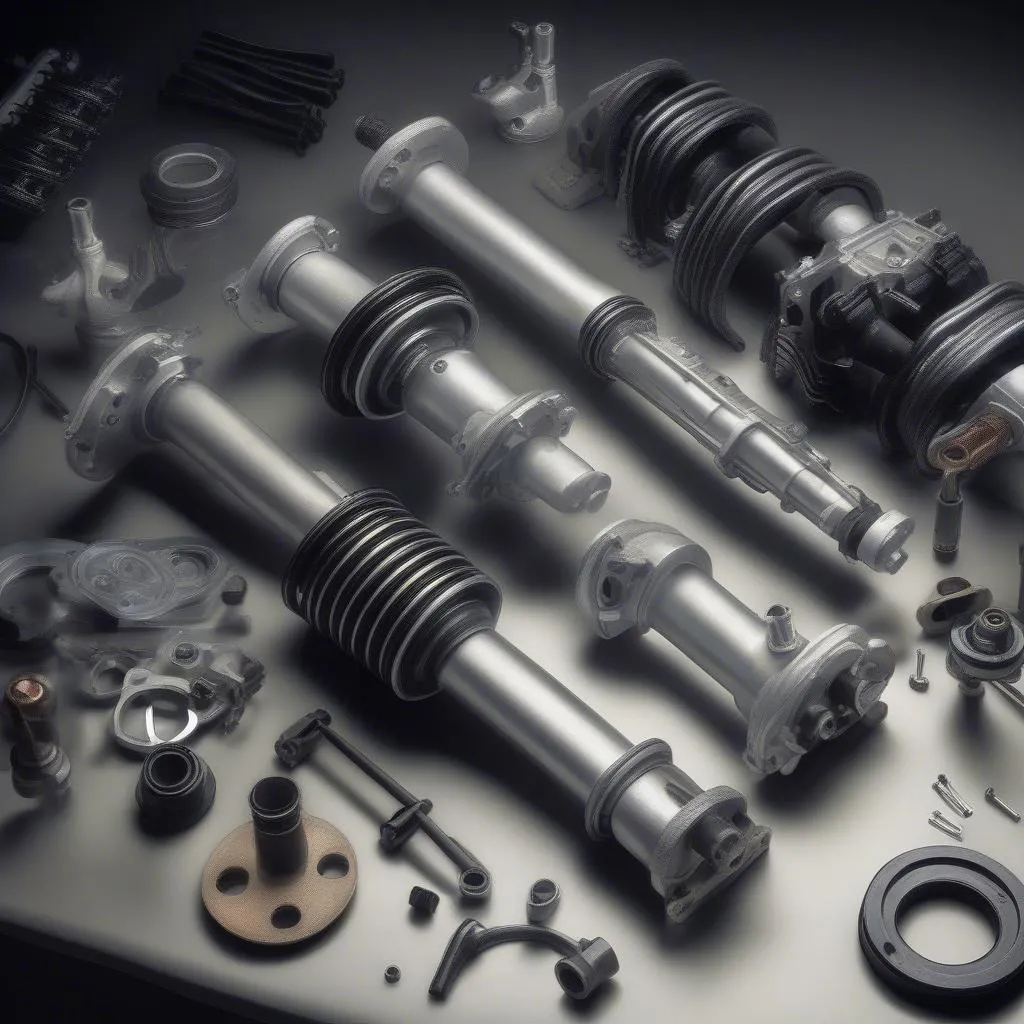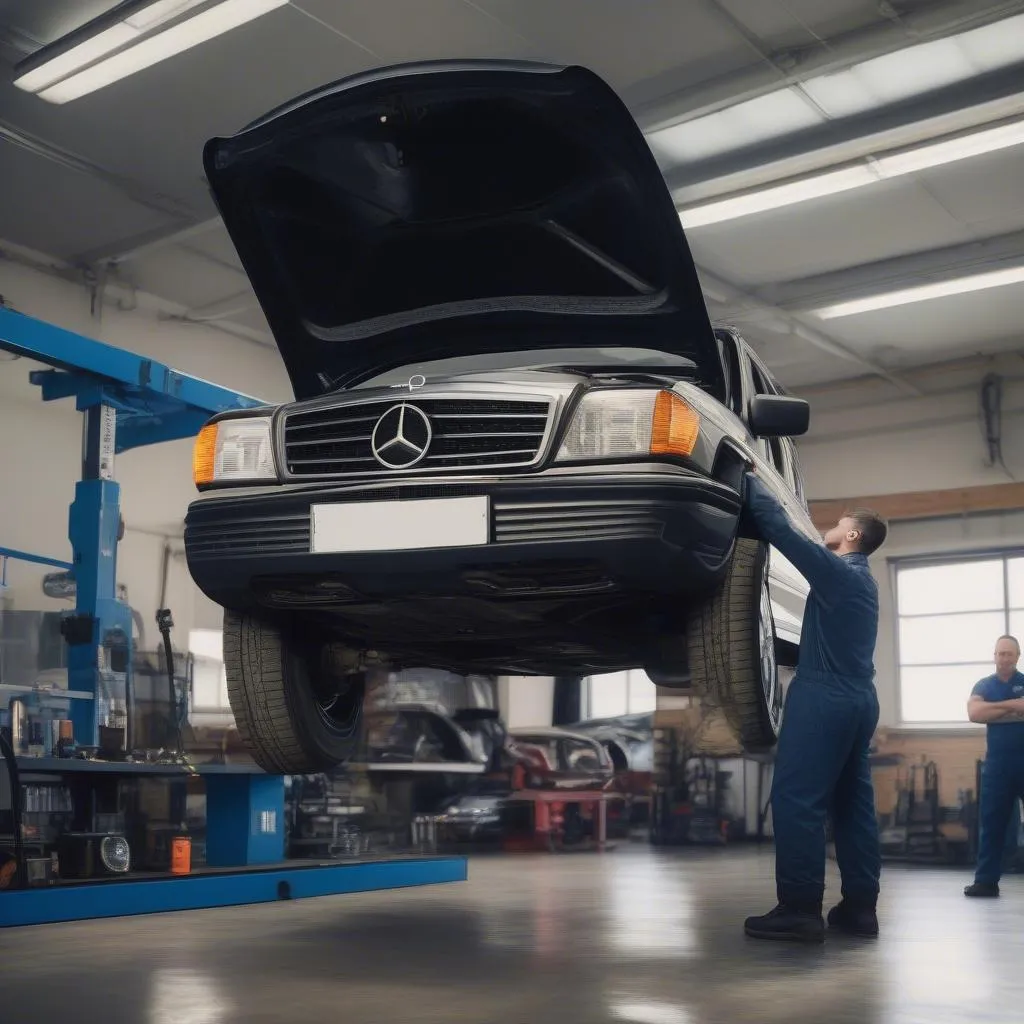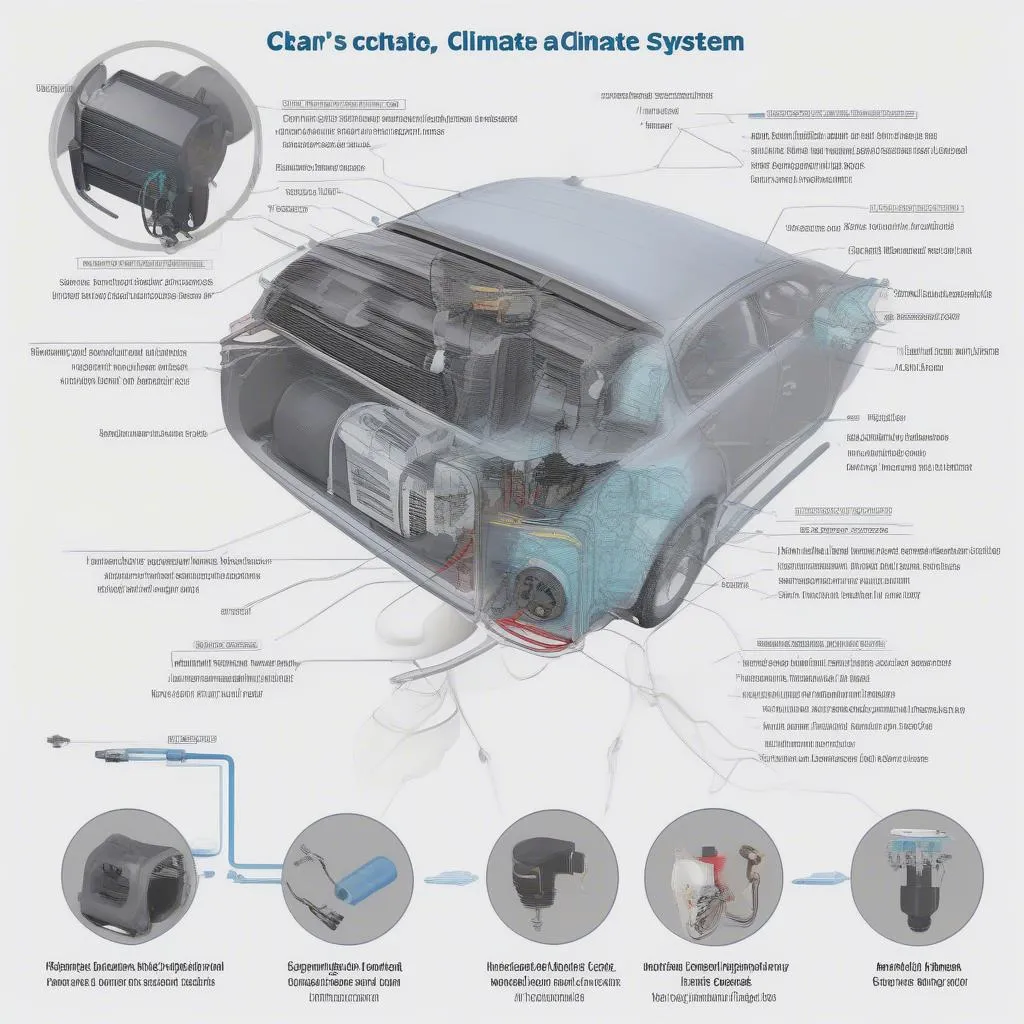A bumpy ride, uneven car height, or strange noises coming from your Mercedes suspension are all signs that something isn’t right. While a trip to the mechanic is always recommended for a long-term solution, there are temporary fixes you can implement to get back on the road safely. This article guides you through identifying the problem, potential temporary solutions, and when professional help is essential.
Understanding Mercedes Suspension Problems
Common Causes of Suspension Issues:
Several culprits could be contributing to your Mercedes’ suspension woes:
- Worn-out Shocks or Struts: These components absorb bumps and vibrations. Over time, they wear out, leading to a bouncy ride and reduced handling.
- Damaged Springs: Springs maintain ride height and support the vehicle’s weight. A broken spring can cause the car to sag and affect steering.
- Leaking Air Suspension: Some Mercedes models have air suspension systems. Leaks in the air lines, compressor, or air struts can result in an uneven ride height or a complete suspension drop.
- Worn-out Bushings and Joints: These rubber components connect suspension parts and dampen vibrations. When worn, they can cause clunking noises and affect alignment.
Recognizing the Signs:
- Excessive Bouncing: If your car bounces excessively after hitting a bump, your shocks or struts might be worn.
- Uneven Ride Height: A visibly tilted car or a difference in wheel gap between sides could indicate a broken spring or air suspension problem.
- Clunking or Knocking Noises: Worn bushings or ball joints often produce these sounds, especially when going over bumps.
- Pulling or Drifting: Suspension problems can affect alignment, causing your car to pull to one side.
- Rough Ride: Overall harshness and vibrations while driving can signal various suspension issues.
Temporary Fixes: Proceed with Caution
Important: Temporary fixes are not long-term solutions and should only be used to get you to a mechanic safely.
1. Inflate Tires Correctly: Ensure your tires are inflated to the recommended pressure listed on the driver’s side door jamb. Uneven tire pressure can mimic suspension problems.
2. Inspect for Visible Damage: Carefully examine all suspension components for obvious signs of damage, such as leaks, cracks, or broken parts. If you notice any severe issues, do not attempt a temporary fix.
3. Temporary Suspension Kits: For specific issues like a completely deflated air suspension, temporary suspension kits can raise the vehicle enough to drive to a repair shop. These kits should only be installed by individuals familiar with car mechanics.
4. Professional Diagnostics: Using an OBD2 scanner like those offered by Cardiagtech can help pinpoint the source of your suspension problems by reading error codes from your Mercedes’ onboard computer. This information can prove invaluable when consulting with a mechanic.
When to Call a Mechanic
It is crucial to remember that temporary fixes are precisely that – temporary. For any persistent or worsening suspension issues, consult a qualified mechanic immediately. Driving with a compromised suspension is unsafe and can lead to further damage and costly repairs.
 Mercedes Suspension Parts
Mercedes Suspension Parts
Frequently Asked Questions
Q: Can I drive with a broken suspension spring?
A: It is highly discouraged to drive with a broken spring as it severely affects handling and can be dangerous.
Q: How much does it cost to fix a Mercedes suspension?
A: The cost varies depending on the model, the severity of the problem, and labor costs. It’s best to get a quote from a qualified mechanic.
Q: How often should I get my Mercedes suspension inspected?
A: It’s recommended to have your suspension inspected annually or every 50,000 miles, whichever comes first.
 Mechanic Inspecting Mercedes Suspension
Mechanic Inspecting Mercedes Suspension
Conclusion
Addressing suspension problems promptly is crucial for a safe and enjoyable driving experience in your Mercedes. While temporary fixes can bridge the gap in emergencies, professional diagnosis and repair are essential for long-term solutions. Remember, safety should always be the top priority.
Consider exploring CARDIAGTECH’s range of OBD2 scanners to gain a better understanding of your Mercedes’ health and potentially diagnose suspension issues early on.

